2022 Week 7: Environment, Sustainability & Community Health
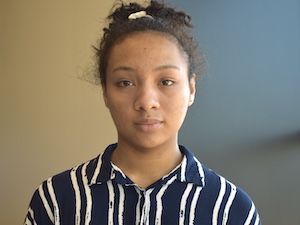 Angelica Brooks | Farm Alliance of Baltimore
Angelica Brooks | Farm Alliance of Baltimore
Intersectionality is a concept that I always see while working with the Farm Alliance of Baltimore. At the forefront, the Farm Alliance deals with urban agriculture as well as supplying resources and a community to urban farms and gardens around the city. However, there are always communications happening with important social, economic, and political figures/organizations. For example, I was a part of hosting a Community Day at an urban farm in Curtis Bay for the neighboring community. Our day primarily involved giving out free produce. The first person to show up was actually a city councilmember representing the district that Curtis Bay is included in. Beyond the event serving as a way to unite community members, there was also an intersection because of the politician’s ability to share their views and interact with our organization, which may not have happened otherwise.
In terms of other CIIP placements, I’ve had conversations with fellow interns in my cohort that wanted to spread awareness about food insecurities, or help the youth learn about urban farming. Unfortunately, I never got plans to stick regarding the collaborations. However, I do see possible collaborations with some of the other organizations that are involved with CIIP. I think that the organizations affiliated with the YouthWorks program are especially good for the Farm Alliance because it will introduce a new mode of intersectionality that I believe is currently missing. There aren’t many initiatives with the youth going on in the organization, but I think it is important to expose children to food systems and urban agriculture at an early age. By collaborating with a YouthWorks based organization (one like MissionFit for example), children can be exposed to a modern form of agriculture, and also learn about important topics such as food insecurities/food apartheid, sustainable living, and the work that goes into cultivating the food we all eat.
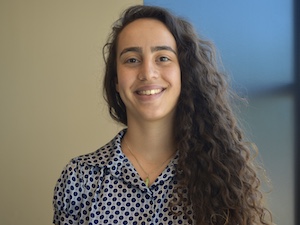 Siena DeFazio | Joy Wellness
Siena DeFazio | Joy Wellness
Intersectionality is evident in the positioning of the clinic itself. Joy Wellness Center has a unique advantage in that it is directly attached to Shepherd’s Clinic and that we directly receive referrals. Having a limited income makes wellness-related endeavors seem wasteful in many people’s eyes. However, because of the increased authority of having a medical referral, our clients have a higher esteem for wellness services.
Additionally, our larger goal is to treat the health impacts of toxic stress and intergenerational trauma. This is part of the reason I am so passionate about acupuncture because it has the ability to open a person more deeply to meditation and in turn increases neuroplasticity, along with physical health benefits.
I see the potential for collaboration with other groups that work at breaking the cycle of intergenerational trauma. For example, Wide Angle Youth works to give kids a voice and therefore an outlet for stress and a means to empower. An interesting collaboration would be a documentary about the community acupuncture center we work with.
Another collaboration could be through Mom Cares. The most substantial impacts of stress are spread through pregnancy. I learned in my adverse childhood experiences class that adversity and stress experienced by a pregnant mother have an effect on the fetus similar to early childhood trauma. Through collaboration, we could start a mothers’ wellness course focused on finding a meditation technique and wellness routine while also sharing our available resources and advertising classes.
Wellness always operates on multiple intersectionalities because of the nature of stress and its connection with oppression. Learning coping skills is not a palliative, but one step of many toward empowerment.
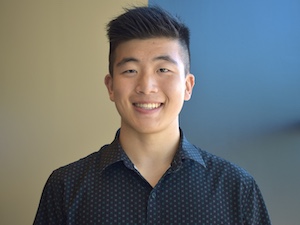 Jeremy Gu | Baltimore SquashWise
Jeremy Gu | Baltimore SquashWise
This is the last week of middle school camp. There is improvement across the board with the students in terms of enrichment activities and the area of squash. I also think I’m improving at both squash and my work as the intern. I’m noticing that I have a lot more flexibility with the morning activities since I’m no longer doubting myself and wondering if the activity will be fun for the students. Instead of thinking if the students are going to enjoy the activities, I try and think about the concepts they learned during enrichment sessions and just go with the activities that my gut is telling me. Usually, when we just pull into an activity, most of the students also just go with the flow and match the energy. It’s been much better than second guessing myself half committing to activities.
It’s interesting that in the last week of camp, I finally feel in a really stable rhythm. Right as the camp is about to end, my days are becoming easy and predictable. Next week, I get to go through the beginning of the high school camp which should bring a totally different energy. The Squashwise middle school program has been really fun and exciting. Most of the students came into the program knowing each other since they usually came from KIPP middle school, but even the ones that came in knowing nobody also felt like they were part of the community here too. It was great to also see the high school YouthWorkers, all students who have gone through the middle school program themselves, also help out with the middle school programming: providing valuable insight and understanding that not even the newer staff could provide. It really shows how listening plays a huge role in the idea behind serving vs. helping.
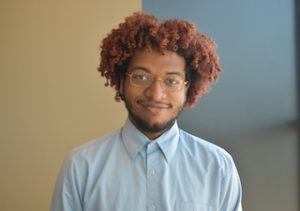 Brahein Richardson | Black Church Food Security Network
Brahein Richardson | Black Church Food Security Network
My placement, the Black Church Food Security Network, is well known in the food justice space nationally. In one of the programs BCFSN offers, Operation Higher Ground, we provide churches with grant money to start their own church garden. Many of these church gardens continue to expand and yield enough produce for the church to sell. I personally would imagine that many of these churches could at some point become a part of the Baltimore Farm Alliance and become intersected with many of the community and urban gardens here in Baltimore, this is a possibility. An additional program that BCFSN has is the A.R.C. (Assembling our Resources for Community Sustainability) program. This initiative has the goal of creating our very own food supply chain up and down the I-95 corridor, with produce from Black farmers being transported up and down the east coast. If we could have more organizations buying from our network of black farmers, this would catapult the initiative to even greater fruition. If placements have food banks or food pantries, they could order produce from the Black farmers to support one of our missions to support access and autonomy with choosing healthier foods. If placements have soup kitchens and provide hot meals, some of the produce that our network of farmers plant and harvest, can be used as fresh ingredients in these meals. Another step in this could have these organizations themselves included in the supply chain. Cold storage is very important when transporting certain types of produce, and having this as an asset of the food supply chain could increase the flexibility and impact of the A.R.C. program initiative astronomically. There is definitely so much more room for collaboration that goes beyond what I have mentioned.
This past Thursday, I visited Whitelock Community Farm with my supervisor and the YouthWorkers at my placement. We sort of traded placements for half a day; the YouthWorkers and I got a tour of the farm and the next day, the YouthWorkers at Whitelock came to MissionFit. I also saw Marisa on the job and got to speak with her!
For the last few years, I’ve been interested in learning more about how to achieve more equitable food systems, and in particular, the first step in the food system, production. However, I haven’t had the chance to set foot on a farm until now. Wykeem, one of the managers at Whitelock, showed us a variety of produce that they grow, from familiar names such as tomatoes, cherry tomatoes, kale, and collards to vegetables such as kohlrabi and fennel that I haven’t really seen or heard about before. He told us that the crops grown at Whitelock are the most organic produce we could find as they don’t use any chemical fertilizers or pesticides. He recommends that we primarily buy all of our produce from local farmer’s markets and then turn to supermarkets like Giant for anything we can’t find at these weekly farmer’s markets to ensure that we are consuming the safest, freshest, and most organic food possible.
The highlight of the trip was definitely getting to contribute a little bit to the work on the farm. Wykeem put us to work tilling a plot of land to prepare it for planting crops. Our job was to dig up and overturn the grass to bring the soil to the surface and to rake away woodchips, weeds, and other things we didn’t want in the soil. We got to use a variety of tools, the names of some of which I don’t remember. My favorites were the axe and a claw-shaped tool that you stick into the earth to rotate the soil clockwise. It was cool to see how quickly we made progress on that plot of land with about 7 or 8 of us working simultaneously. Something about this experience of working directly on the earth and in tandem with a group of people felt really centering, blissful, and purposeful, all while being removed from the hectic feel of daily life for an hour or two. I really enjoyed the experience and I’m definitely considering volunteering at the farm during the school year with Marisa.
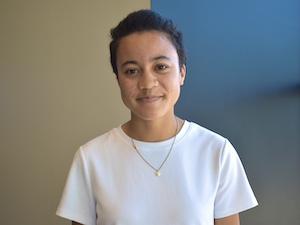 Marisa Thomas | Whitelock Community Farm
Marisa Thomas | Whitelock Community Farm
This past Thursday, I visited Whitelock Community Farm with my supervisor and the YouthWorkers at my placement. We sort of traded placements for half a day; the YouthWorkers and I got a tour of the farm and the next day, the YouthWorkers at Whitelock came to MissionFit. I also saw Marisa on the job and got to speak with her!
For the last few years, I’ve been interested in learning more about how to achieve more equitable food systems, and in particular, the first step in the food system, production. However, I haven’t had the chance to set foot on a farm until now. Wykeem, one of the managers at Whitelock, showed us a variety of produce that they grow, from familiar names such as tomatoes, cherry tomatoes, kale, and collards to vegetables such as kohlrabi and fennel that I haven’t really seen or heard about before. He told us that the crops grown at Whitelock are the most organic produce we could find as they don’t use any chemical fertilizers or pesticides. He recommends that we primarily buy all of our produce from local farmer’s markets and then turn to supermarkets like Giant for anything we can’t find at these weekly farmer’s markets to ensure that we are consuming the safest, freshest, and most organic food possible.
The highlight of the trip was definitely getting to contribute a little bit to the work on the farm. Wykeem put us to work tilling a plot of land to prepare it for planting crops. Our job was to dig up and overturn the grass to bring the soil to the surface and to rake away woodchips, weeds, and other things we didn’t want in the soil. We got to use a variety of tools, the names of some of which I don’t remember. My favorites were the axe and a claw-shaped tool that you stick into the earth to rotate the soil clockwise. It was cool to see how quickly we made progress on that plot of land with about 7 or 8 of us working simultaneously. Something about this experience of working directly on the earth and in tandem with a group of people felt really centering, blissful, and purposeful, all while being removed from the hectic feel of daily life for an hour or two. I really enjoyed the experience and I’m definitely considering volunteering at the farm during the school year with Marisa.

